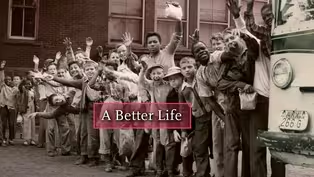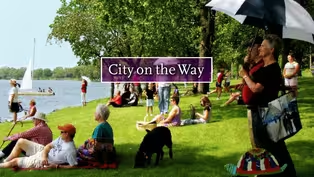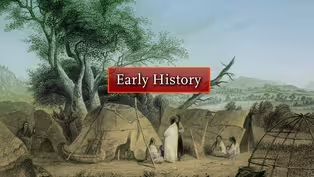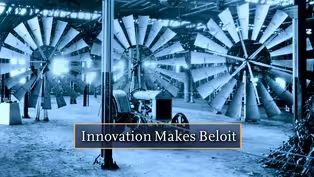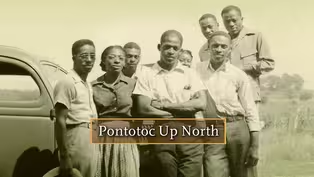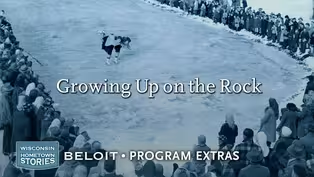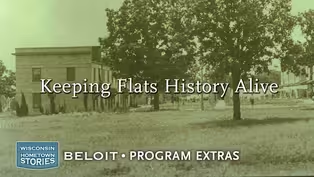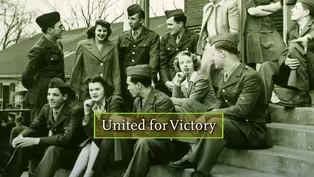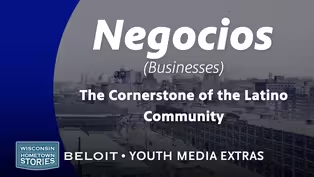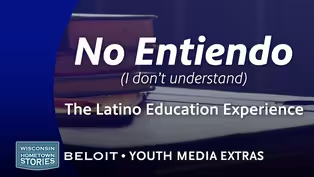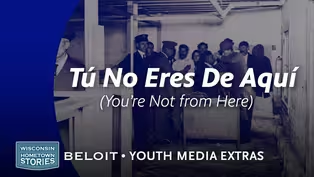
Youth Media Extra: Deportation
Clip: Special | 5m 48sVideo has Closed Captions
Students examine the history of deportation in the United States.
Students from Beloit Memorial High School examined the history of deportation in the United States. With support from PBS Wisconsin Education and Beloit community members, students conducted research, learned about creating and producing media, and produced short documentaries.
Problems playing video? | Closed Captioning Feedback
Problems playing video? | Closed Captioning Feedback
Wisconsin Hometown Stories is a local public television program presented by PBS Wisconsin

Youth Media Extra: Deportation
Clip: Special | 5m 48sVideo has Closed Captions
Students from Beloit Memorial High School examined the history of deportation in the United States. With support from PBS Wisconsin Education and Beloit community members, students conducted research, learned about creating and producing media, and produced short documentaries.
Problems playing video? | Closed Captioning Feedback
How to Watch Wisconsin Hometown Stories
Wisconsin Hometown Stories is available to stream on pbs.org and the free PBS App, available on iPhone, Apple TV, Android TV, Android smartphones, Amazon Fire TV, Amazon Fire Tablet, Roku, Samsung Smart TV, and Vizio.
[gentle music] - Armando Tillery: Deportation is a legal process where immigrants are being detained and forcefully removed from their homes and the country and sent to their home country.
It is a process that separates families, children from their parents, and traumatizes generations of immigrants.
- Josalin Parker: People are being separated from their families, and kids can have lasting mental health issues, such as sleeping changes, anxiety, sadness, anger, and withdrawal.
In addition, the loss of income from being deported creates financial instability for the family members left behind as well as the person leaving the country.
Although the United States has benefited from immigration economically, historically, the United States has made it difficult for immigrants to enter the country and difficult for immigrants already in the country to stay.
- Zander Phiffer: Until the 1920s, the border between Mexico and the United States was open.
In 1929, the U.S. government required Mexicans to obtain visas in order to enter the country and installed a patrol along the border.
With these new requirements, the United States deported 82,000 Mexicans throughout the Great Depression.
However, in 1942, Congress enacted the Braceros Program, which brought immigrant labor to the United States to work agriculture jobs that were worked by people who were serving the military during World War II.
Immigrants came from Mexico expecting to learn valuable skills and higher pay than they were earning in Mexico.
However, immigrants working those jobs were exposed to low pay, discrimination, and dangerous chemicals.
When the Braceros Program ended in 1964, people risked staying in the country illegally in order to have more opportunities and a better life for themselves and their families.
In addition, the low pay from the work program made it impossible for the people to afford to go back to Mexico and return to the United States.
The Midwest became one of the largest populations for immigrants throughout the '70s and '80s because of the promise of the industrial and agricultural opportunities.
Chicago trailed only LA as the urban area with the largest concentration of undocumented immigrants throughout the period.
Mexican immigration to Wisconsin continued to grow after the 1970s as factories, tanneries, foundries, canners, and meatpackers began to more heavily recruit Mexican natives-- throughout both legal and extralegal means-- to fill an expanding number of grueling, low-paying positions.
The impacts of deportation go beyond economic loss and instability.
People who illegally stayed in the United States after the Braceros Program took advantage of the opportunities the United States provides, such as education, protection, security, and stable homes to raise their families.
Being forcibly removed from that stability and loved ones takes a huge toll on those who are deported.
- Hugo Sanchez: It's really hard because usually, most of us lose our job and families.
Some of them don't come back or don't have the chance to get back here.
And I got deported back in, I think it was 2008, 2009.
Everything started when I went to the airport to pick up my kids coming from Mexico.
I got pulled over by a cop.
After that, they just pulled me out of the car, take me to jail.
Spent two months in jail for that.
Get deported back to Mexico and spent 10 years until my legal situation can be fixed and get back to the United States.
It was hard to get communication with my kids.
One of the little ones got sick twice to the point that she almost died just for the allergies that she has.
So trust me, it's not something easy for me just to know by phone that my kid almost died and my kid is in the hospital.
I wasn't doing anything bad.
For the people that is not doing good at all, sell drugs, do drugs, do some other bad stuff like get drunk and drive or kill somebody, that people just, I feel like it's not good to have that kind of people here.
But on the other side, for the people that actually work, just spend time with the family and do the best they can every day to bring money home, I don't think they deserve that.
- The experience of deportation is undeniably difficult.
Deportation disrupts not only the lives of those removed, but also the lives of their friends and family who stayed in the U.S.
Many people in similar situations experience them getting taken away from their families, financial problems, and the hardship of being in a foreign country.
The lack of physical presence makes it incredibly difficult to maintain meaningful relationships and support one another, especially during times of tribulation.
[gentle music]
Video has Closed Captions
Clip: Special | 7m 7s | Across decades, Beloit’s newcomers find opportunity and community through education. (7m 7s)
Video has Closed Captions
Clip: Special | 10m 39s | Beloit’s residents revitalize their city and return to the confluence where it all began. (10m 39s)
Video has Closed Captions
Clip: Special | 7m 26s | The confluence of two waterways drew the Ho-Chunk Nation and settlers to the Beloit area. (7m 26s)
Video has Closed Captions
Clip: Special | 9m 47s | Early residents built up their city through Beloit College and industrial innovation. (9m 47s)
Video has Closed Captions
Clip: Special | 9m 27s | Southern Black families moved to Beloit to escape injustice and seek job opportunities. (9m 27s)
Preview - Wisconsin Hometown Stories: Beloit
Preview: Special | 30s | Stories of industry, education and community pride illustrate Beloit’s rich history. (30s)
Video has Closed Captions
Clip: Special | 2m 40s | John Patrick’s family grocery store fed a hunger for yellow margarine on the state line. (2m 40s)
Program Extra: Growing Up on the Rock
Video has Closed Captions
Clip: Special | 3m 36s | Ron and Gary Delaney fondly remember growing up on the Rock River. (3m 36s)
Program Extra: Keeping Flats History Alive
Video has Closed Captions
Clip: Special | 2m 25s | Three former Fairbanks Flats residents reminisce growing up in their community. (2m 25s)
Video has Closed Captions
Clip: Special | 8m 31s | Beloit’s industry, college and community each contributed to World War II victory. (8m 31s)
Video has Closed Captions
Clip: Special | 4m 22s | Students examine the history of Latino-owned businesses in Beloit and nationally. (4m 22s)
Youth Media Extra: No Entiendo
Video has Closed Captions
Clip: Special | 5m 52s | Students examine the history of accommodations for Latino students in schools. (5m 52s)
Youth Media Extra: Tú No Eres De Aquí
Video has Closed Captions
Clip: Special | 5m 30s | Students examine the history of discrimination against Latinos in the workplace. (5m 30s)
Providing Support for PBS.org
Learn Moreabout PBS online sponsorshipSupport for PBS provided by:
Wisconsin Hometown Stories is a local public television program presented by PBS Wisconsin
